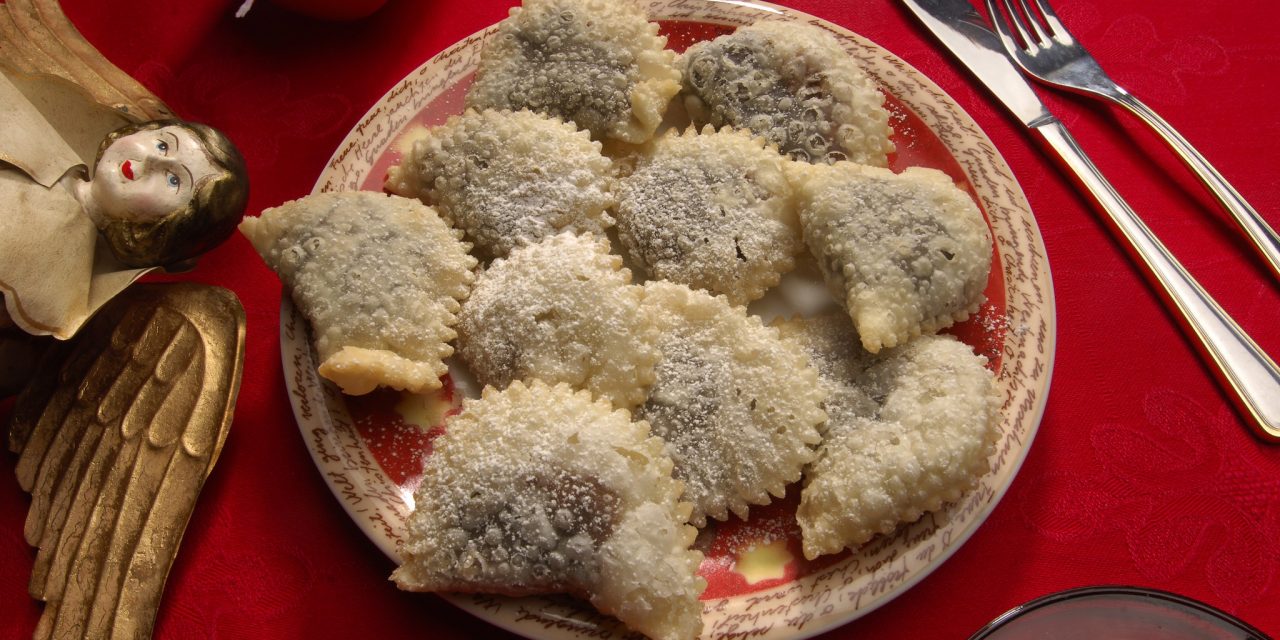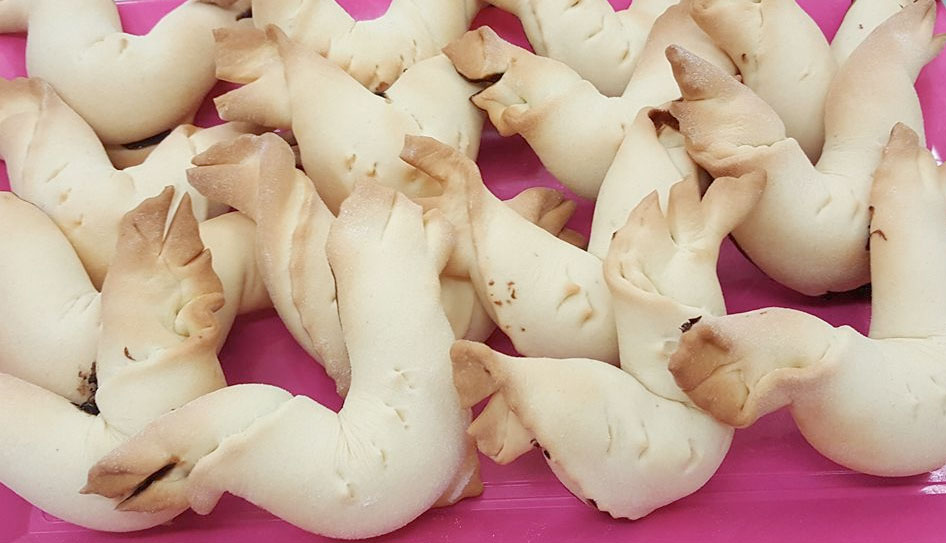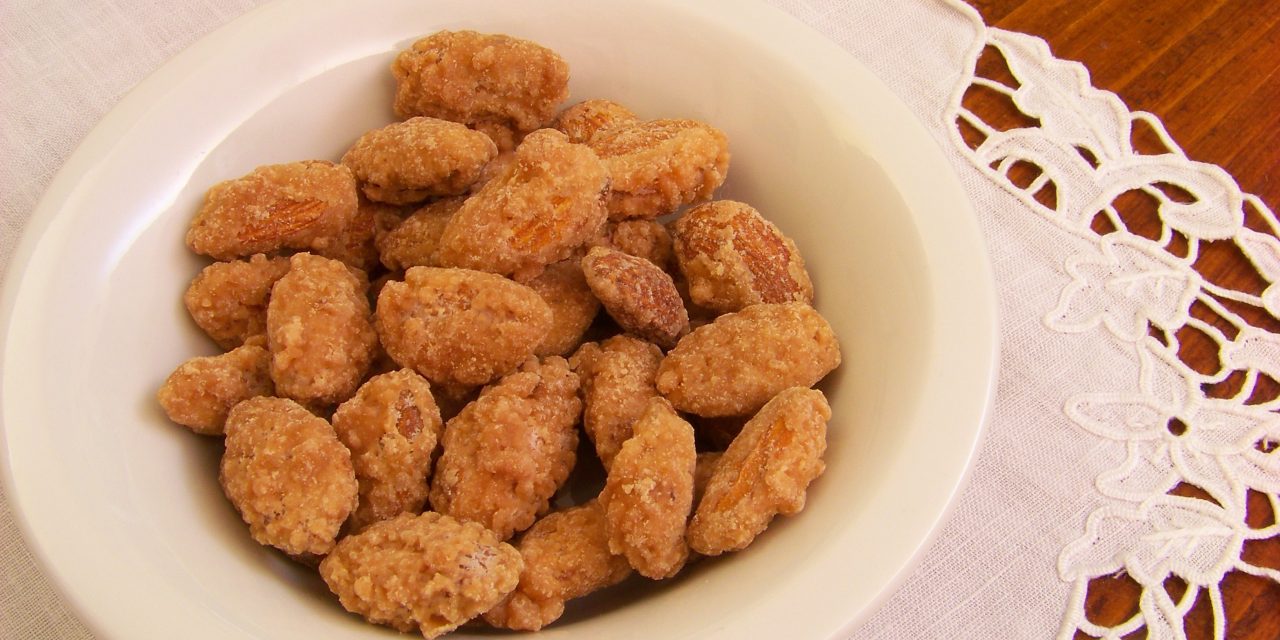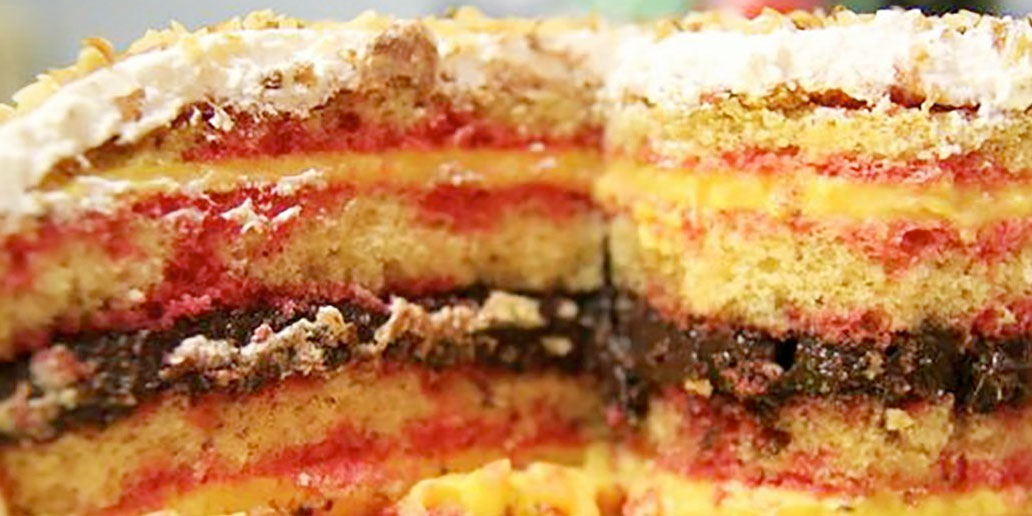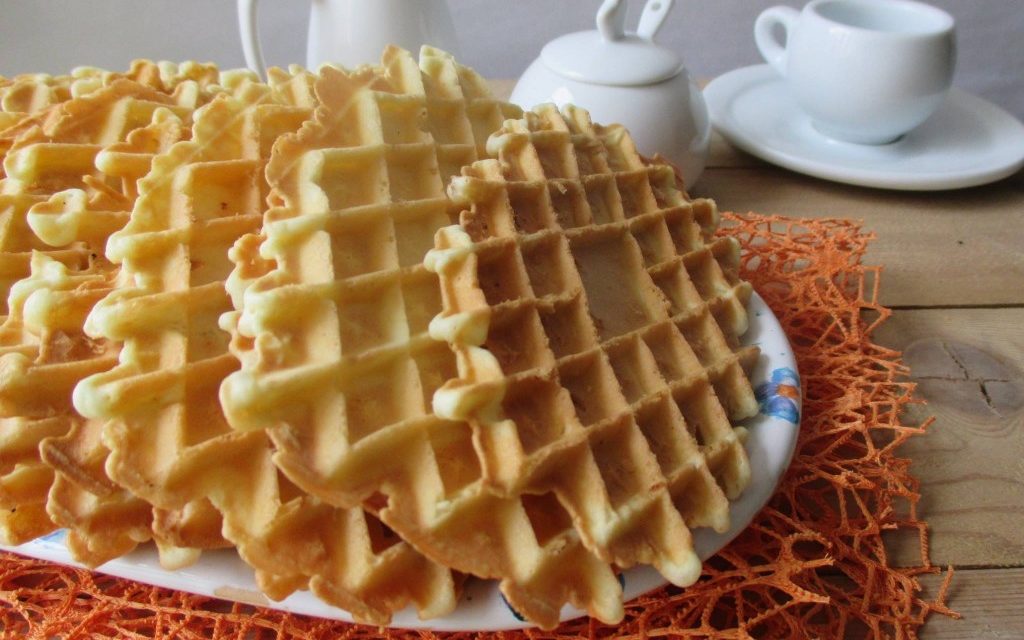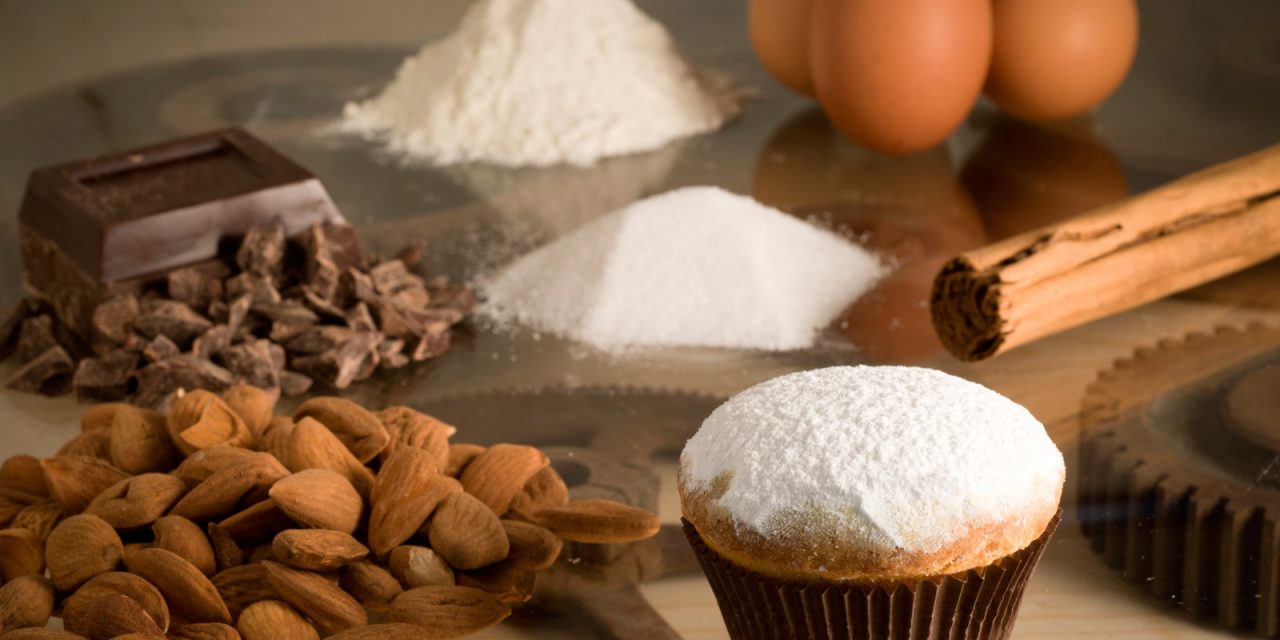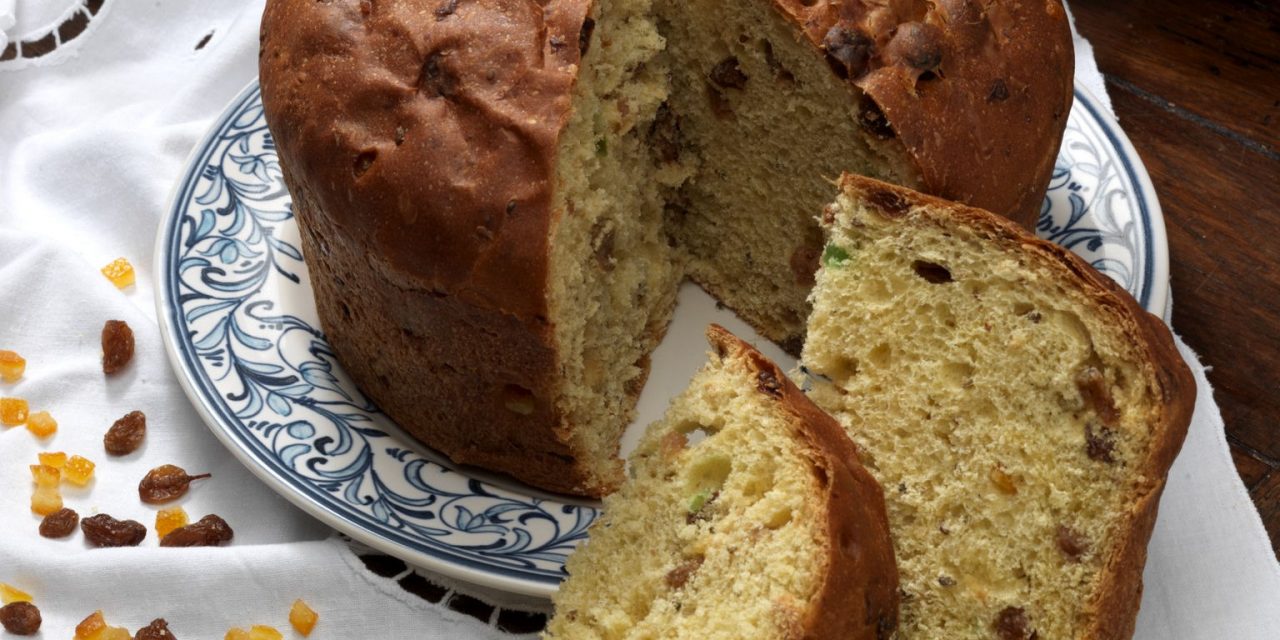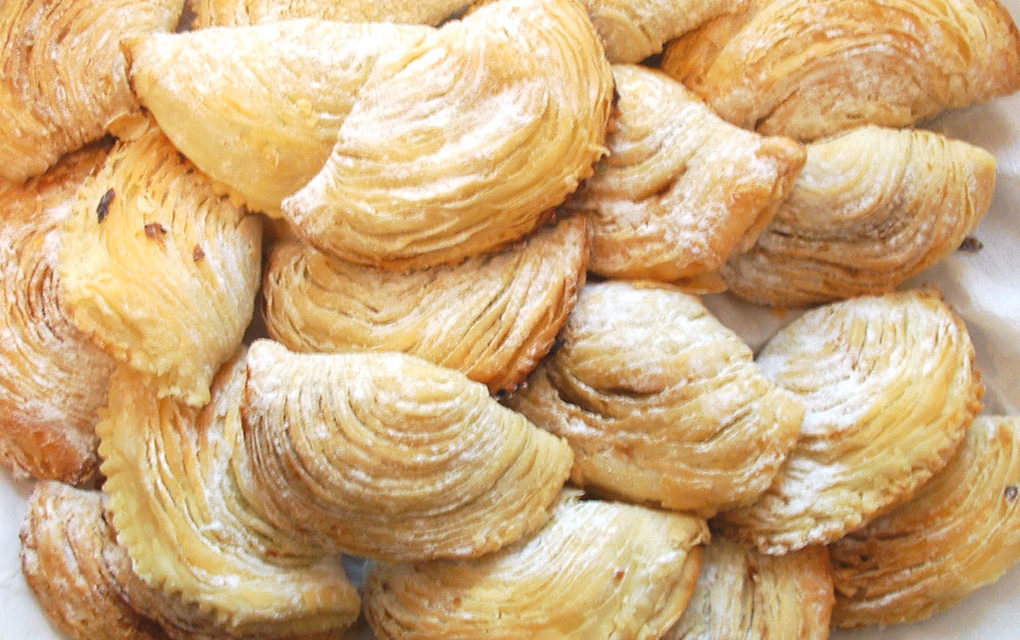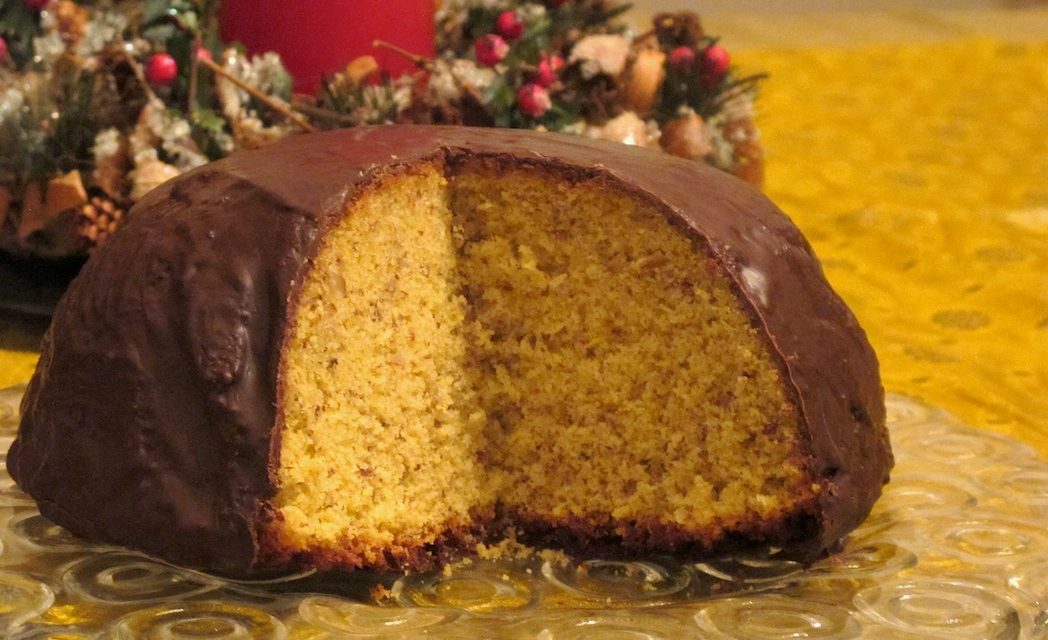
Gluttony of tradition that come back to the table in holidays or prepared to complement the menu on any other occasion: i Abruzzo sweets have distant origins in time and their recipes have been handed down from generation to generation .
The careful selection of genuine and quality ingredients it is the guarantee that allows you to taste unique goodness, in which they hide and then reveal themselves irresistible flavors for the palate . Let’s see what some are typical sweets of the land of Abruzzo and we discover something about their history and origin.
Caggionetti
The caggionetti they are brought to the table in December. In fact, they are part of the sweet menu of the Christmas period and can be enjoyed accompanied by a glass of ratafia you hate gentian liqueur . They are originating in the province of Teramo , but they are, of course, cooked and enjoyed throughout the region and for this they prepare themselves differently.
They cause them or adjunct or pegs they are ravioli with a thin sheet with different delicacies inside them depending on the location. In fact, they can be enjoyed with the filling of scrucchiata (i.e. the grape jam of Montepulciano ), of chickpeas, chestnuts to which they are added ground almonds, rum, chocolate, the honey : in any case, the final result is always a real joy for the palate.
If you refer to the oldest peasant tradition , it should be emphasized that the filling was limited to the products available in the area and, therefore, i caggionetti they could have a filling of chickpeas if prepared in the countryside and in areas chestnuts in mountain areas. At the time, moreover, of course, the rum , in its place was the cooked must which was an easily available ingredient and which, paradoxically, is currently rarely used, precisely because it is not available.
Little birds of Sant’Antonio
The little birds of Sant’Antonio are typical sweets of Teramo and, as the name implies, they are prepared and enjoyed for the feast of Sant’Antonio Abate , the protector of animals, who falls on January 17 . In the past, on the occasion of the feast, some people they dressed as Saint Anthony and the devil and wandered through the streets of the town singing and brought with them wicker baskets in which they collected gifts and these homemade treats that were offered.
Li cillitte de Sand’Andonie they are very tasty, starting with their shape which recalls that of the birds. Based on shortcrust pastry , inside them they hide one exquisite filling who sees a mix of grape and apple jam to which they are added almonds toasted and chopped e chocolate dark chopped, everything is then flavored with rum , cinnamon powder and the zest grated orange . The skill and fun of those who today continue to prepare them at home is right in making its shape .
Abruzzo Stones
The Abruzzo Stones – also called landed almonds – they come from the territory of Sant’Egidio alla Vibrata . The trademark of their recipe was registered in 1975 since Cicconi Confectionery , in which they were prepared, initially, only for use almonds that had broken apart .
According to a legend, however, their origin refers to a hamlet of Sant’Egidio, Villa Marchesa , where is it, on Christmas day of 1900 , a poor family was hosted for lunch at another family’s home. It is said that the guests, to return the courtesy, brought a bag of sugar-coated almonds .
The Abruzzo Stones , as their name suggests, they are hard, crunchy and delicious and prepare with toasted almonds which are covered with a mixture of sugar and cocoa . Once cooled, they are ready to taste and have the advantage of keep for a long time if placed in an airtight container.
Pizza dolce abruzzese
There pizza dogge is the inevitable sweet of holiday occasions : from birthdays to holidays, Easter, Christmas, August 15th. Can be considered the queen of cakes and not by chance.
For his wealth from the point of view of flavor , it was, in fact, originally confidential at the lunch of weddings and to answer the number of guests it was always a large cake, calculating that it could have a diameter up to 50 centimeters and it could be high too 20 centimeters .
Once ready, the pizza dogge it was taken to the bride’s house the day before the ceremony to be consumed at the end of the wedding lunch . In the past it was preparing not using yeast and the dough that gave life to the sponge cake it was cooked on the grill , as told by the grandmothers handing down their original recipes which still today are reproduced at home and in some cases give life to the cakes proposed in local pastry shops.
There pizza dogge is a sponge cake divided into a series of wet layers with liquor and stuffed with there cooked must jam , custard, chocolate cream, almond paste . In the past, the cake was covered with one white icing prepared with butter, powdered sugar, egg whites, while today it is often covered with whipped Cream or with one white cream .
In each family of the various regional localities there pizza dogge has been customized , but it always remains the proposal of excellence for every moment of celebration .
Pizzelle or ferratelle from Abruzzo
The pizzelle or ferratelle they are traditional sweets of Christmas holidays . They usually are rectangular , but they can also be rounded or have a shape fan-shaped .
Depending on the area in which they are prepared, they also have other names, deleted , neole , catarrette , in addition to having a different consistency: they can be, in fact, hard or soft , in the latter case they are rolled up.
They are gods pods with a typical roundup form and based on cookie dough . They can be enjoyed alone accompanied with a coffee, but they definitely become more delicious with their filling which can vary according to taste: from the traditional one of grape jam to the most diverse jams of fruit , at the chocolate cream or hazelnut , at the white cream or they are also delicious accompanied with fresh fruit .
They buy the roundup form after being cooked lu ferre : a special traditional instrument and so valuable from be part of the brides’ trousseau and which, of course, has modernized.
Today, in fact, it is available in many forms suitable for any occasion and is electric, but looking in the local markets or in small shops in the villages , you can still find them ancient versions which, on the other hand, are used on the gas stove. The cooking time of the pizzelle in the iron it is only a few minutes long and, according to tradition, it was the one used to say a prayer .
Parrozzo
The parrozzo is a dessert originating from Pescara originally dedicated to the Christmas table and has the recognition of Traditional Agri-food Product .
He came celebrated by D’Annunzio in its Song of the Parrozzo in which he defined it the sweetest of anything sweet and which was written for Luigi D’Amico , the pastry chef who had created it and who had given it to him. In creating it, D’Amico took inspiration from crude bread , that is a bread of the peasant table prepared with flour of corn and that he had, in fact, the hemispherical shape which has become typical of dessert.
The parrozzo it’s a sweet scenographic , as well as telling about oneself with different people contrasts , in color and flavor, it is, in fact, also good looking : looks like one dome covered with dark chocolate and the latter, in D’Amico’s idea, was going to re-propose the typical one home made bread coloring and cooked in wood.
The interior of the parrozzo is characterized by a yellow color , which, in fact, brings back to the color of the corn flour and that D’Amico proposed again using the eggs , while the typical consistency homemade bread was made thanks to another ingredient: almond flour .
The parrozzo it is cooked in one special mold and it’s a sweet very fragrant which on the palate reveals all its exquisite goodness.
Mostaccioli
Tradition has it that the mostaccioli in Abruzzo they are prepared to cheer the festive table Christmas , but they can be tasted and are available in pastry shops throughout the year.
They are delicious biscuits, of rhomboid shape , covered with chocolate and which reveal an interior particularly greedy and soft .
They are, in fact, typical of many Italian regions with the necessary differentiations and their origin seems to refer at the Roman era , more precisely to desserts based on mustum , that is of must, to pass, then, to the mostazoles from medieval times.
Those from Abruzzo stand out from mostaccioli of the other regions precisely because they seem to be i closer to the original ancient sweets . Of these, ie gods mustaceans , speak out Catone in De Agriculture describing it recipe , which he saw, in fact, among the ingredients honey and must which are still used today in the kitchens of the region when creating these delicious delicacies.
Bocconotti Abruzzesi
The Bocconotti they are shortcrust pastry with a delicious filling , whose recipe is handed down from family to family. They are thought to date back to Eighteenth century , due to the fact that they were used for their filling coffee and chocolate , ingredients that at that time began to be imported and used in Abruzzo.
Their dimension original it was smaller than the current one and for this reason they could be eaten in one bite : characteristic from which their name seems to derive.
As for their origin, in fact, even if there are no accredited historical sources, it is said that they were called this way by the peasant woman of Castel Frentano who invented them one day to prepare a new dessert for his master. It is said that, using the shortcrust pastry , created a cake in the shape of cup filling it inside with coffee and chocolate which made less liquid by adding the egg. After covering the cup with a lid, also made of shortcrust pastry, he let the master taste the dessert who devoured it, in fact, in one bite .
What is known, however, with certainty, is that in 1930 i buccunotte entered the Dictionary of Abruzzo written by Domenico Bielli .
In the past they were cooked at home , on the hearth, using special copper molds . There are, of course, different variations and several jealously guarded recipes . The classic one, however, sees preparing the filling with the scrucchiata : the precious Montepulciano grape jam , to which are added, then, chopped almonds, chocolate, cinnamon and lemon zest to flavor everything.
Easter Pizza
There Easter Pizza it’s a sweet originally from Teramo and is characterized by a peculiar aromaticity due to the use of aniseed .
It was dedicated to the time of sdijune , that is to the early Easter morning breakfast that, in the past, broke, in fact, the two days dedicated to fasting , on Friday and Holy Saturday. It was prepared during Holy Week and taken to church on Holy Saturday to be blessed while awake.
It is still enjoyed today on Easter Day together with hard-boiled eggs , cured meat of various types, including the mortadella from Campotosto , the liver sausages , the salami from L’Aquila , i cheeses , the Red wine , thus creating a real complete meal that accompanies the celebrations with taste.
There homemade Easter pizza preparation it is quite simple, but particular attention must be paid to leavening which involves at least two steps. In its traditional version contains aniseed , but to these, generally, they are added candied fruit, raisins, chocolate, thus making it even more greedy.
It is cooked in tall molds which give it an appearance similar to that of panettone and in some areas of the region it comes covered with a sugar glaze enriched by sprinkles colored .
Abruzzo sfogliatelle
The Abruzzo sfogliatelle are a typical Christmas cake made from shortcrust pastry . They have the typical form fan-shaped of the sfogliatelle prepared in other regions, but they stand out from the others for pasta processing , which must be very accurate and and, above all, done by expert hands, in order to make the layers even thinner and to make a sfogliatella particularly soft .
The origins of the Abruzzo sfogliatelle date back to the late nineteenth-early twentieth century. They were created a Lama of the Peligni , in the province of Chieti, from Donna Anna di Guglielmo , wife of Baron Giampietro Tabassi.
Donna Anna , who was very skilled in the kitchen, having received from the mother-in-law the recipe of the sfogliatelle Neapolitan , he realized his interpretation modifying the ingredients on the base of the local ones and more readily available .
He used, for example, the lard and this enabled her to accomplish that special softness which characterizes the Abruzzo sfogliatelle. For the filling he used the scrucchiata , the delicious Montepulciano grape jam which is prepared according to a traditional procedure that sees the grapes chosen one by one, as well as with black cherry jam , walnuts, the cooked must .
Until the 1960s the recipe remained secret in the kitchens of the building and the sfogliatelle they were the prerogative of the prestigious Tabassi guests. Later, the family cook Start to spread it and so the Abruzzo sfogliatelle they began to cheer other tables of the country and, later, of the region.



